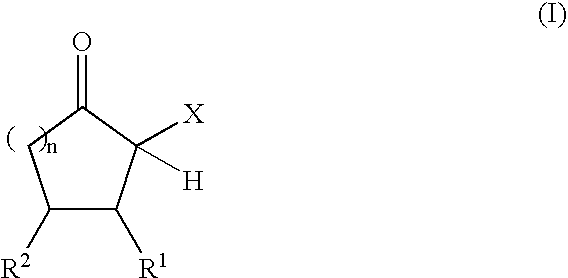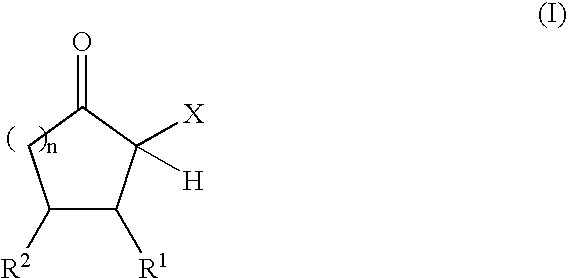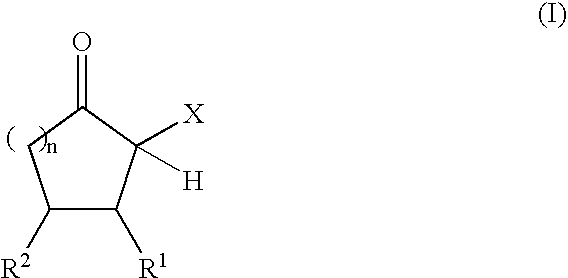Adhesive compositions containing blocked polyurethane prepolymers
a technology of polyurethane and prepolymer, which is applied in the direction of adhesives, polyurea/polyurethane adhesives, adhesive types, etc., can solve the problems of affecting affecting the stability of the adhesive, and exerting a disadvantageous effect on the application property profile of the adhesive formulation
- Summary
- Abstract
- Description
- Claims
- Application Information
AI Technical Summary
Problems solved by technology
Method used
Image
Examples
examples
[0076] In the following examples, percentages are by weight. The viscosities were determined at a test temperature of 23° C. using a ViscoTester VT 550 rotational viscometer from Thermo Haake, Karlsruhe, DE with the SV measuring cup and the SV DIN 2 sensor.
[0077] The NCO content of the prepolymers and reaction mixtures was determined in accordance with DIN EN 1242.
Starting Compounds
[0078] Cyclopentanone-2-carboxyethyl ester (obtained from Fluka). N,N,N′,N′-Tetrakis(2-hydroxyethyl)ethylenediamine (obtained from Fluka and used without any further purification).
Production of Polyurethane Prepolymers Blocked with α-Acidic Cyclic Ketones
Blocked Polyurethane Prepolymer A:
[0079] In a nitrogen atmosphere, 100.8 g (0.30 equiv) of an NCO prepolymer prepared from HDI and a polyether diol (Desmodur® E 305; Bayer MaterialScience AG, Leverkusen, NCO content 12.5%, equivalent weight 336 g / equiv) and 0.095 g of zinc-2-ethylhexanoate were initially charged into a 250 ml four-necked flask wi...
application examples
Example 1
[0084] The quantity of the blocked polyurethane prepolymer (component A) set forth in Table 1 was mixed intensively with the quantity of N,N,N′,N′-tetrakis(2-hydroxyethyl)ethylenediamine (component B) set forth in the table, corresponding to a ratio of blocked NCO groups to OH groups of 1:1. The mixture was then poured into a Teflon dish (diameter: 8 cm, depth: 1 cm) and allowed to cure at room temperature. The measured times to complete cure are set forth in Table 1.
example 2
[0086] The quantity of the blocked polyurethane prepolymer (component A) set forth in Table 3 was mixed intensively with the quantity of N,N,N′,N′-tetrakis(2-hydroxyethyl)ethylenediamine (component B) set forth in the table, corresponding to a ratio of blocked NCO groups to OH groups of 1:1. The mixture was then placed on a Kofler bench and the time to complete cure at elevated temperature determined. The measured times to complete cure are set forth in Table 3.
PUM
| Property | Measurement | Unit |
|---|---|---|
| Angle | aaaaa | aaaaa |
| Angle | aaaaa | aaaaa |
| Angle | aaaaa | aaaaa |
Abstract
Description
Claims
Application Information
 Login to View More
Login to View More - R&D
- Intellectual Property
- Life Sciences
- Materials
- Tech Scout
- Unparalleled Data Quality
- Higher Quality Content
- 60% Fewer Hallucinations
Browse by: Latest US Patents, China's latest patents, Technical Efficacy Thesaurus, Application Domain, Technology Topic, Popular Technical Reports.
© 2025 PatSnap. All rights reserved.Legal|Privacy policy|Modern Slavery Act Transparency Statement|Sitemap|About US| Contact US: help@patsnap.com



